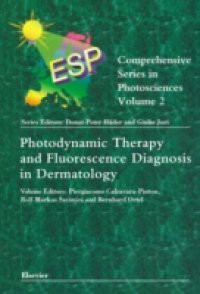Photodynamic therapy has been widely investigated over the past two decades and is emerging as a promising therapeutic modality for skin cancers and several inflammatory diseases. This growing interest is based on the availability of a new simple, effective and safe regimen using the topical application of a pro-drug, 5-aminolevulinic acid, as well as on the development of new "second generation" photosensitizers, namely 5-aminolevulinic acid-esters, phthalocyanines, chlorins, porphycenes and hypericin. In contrast to hematoporphyrin derivatives, these compounds are characterized by short-lasting generalized skin photosensitivity. These dyes are available for either topical or systemic delivery and are well characterized. The basic principles of PDT is more complex than chemotherapy or other pharmacological modalities. PDT involves not only a drug but an otherwise harmless compound that is activated by visible light. The interaction of these two treatment components is PDT. The variability of these both components results in a complexity of the treatment that may disorient the clinician who does not have specific experience in this field. This book aims to focus experimental and clinical findings on PDT in order to attract and direct the attention of a growing number of dermatologists.


















